Introduced well over a year ago, the Transition Relay Carbon PNW X0 AXS was the first eMTB ever to feature FAZUA’s Ride 60 light eMTB motor. We finally got our hands on a test bike to find out what Transition’s light eMTB is capable of and how the exciting battery concept and versatile frame platform fare on the trail.

20,7 kg in size L | € 12,299 | Manufacturer’s website
Since 2001, Transition have been building bikes to withstand the hardships of the trails around their home town of Bellingham, in the Pacific Northwest region (PNW), following their motto of “rider owned for life”. The trails are no joke around here, with frightening features, steep chutes and overall rough terrain conditions humbling even the most capable of riders. Like many of Transition’s bikes, the Relay is available both as a standard model and a hard-hitting PNW variant. Generating 170 mm of travel front and rear, the latter is more capable than the standard version, and relies on a mullet wheel setup and coil shock. Our Relay Carbon PNW X0 AXS test bike tips the scales at a very attractive 20.7 kg and retails for € 12,299. The Relay was the first ever light eMTB to come equipped with a FAZUA Ride 60 motor and was launched back in June 2022. The motor churns out 60 Nm of torque and, as usual, draws its power from a 430 Wh battery.
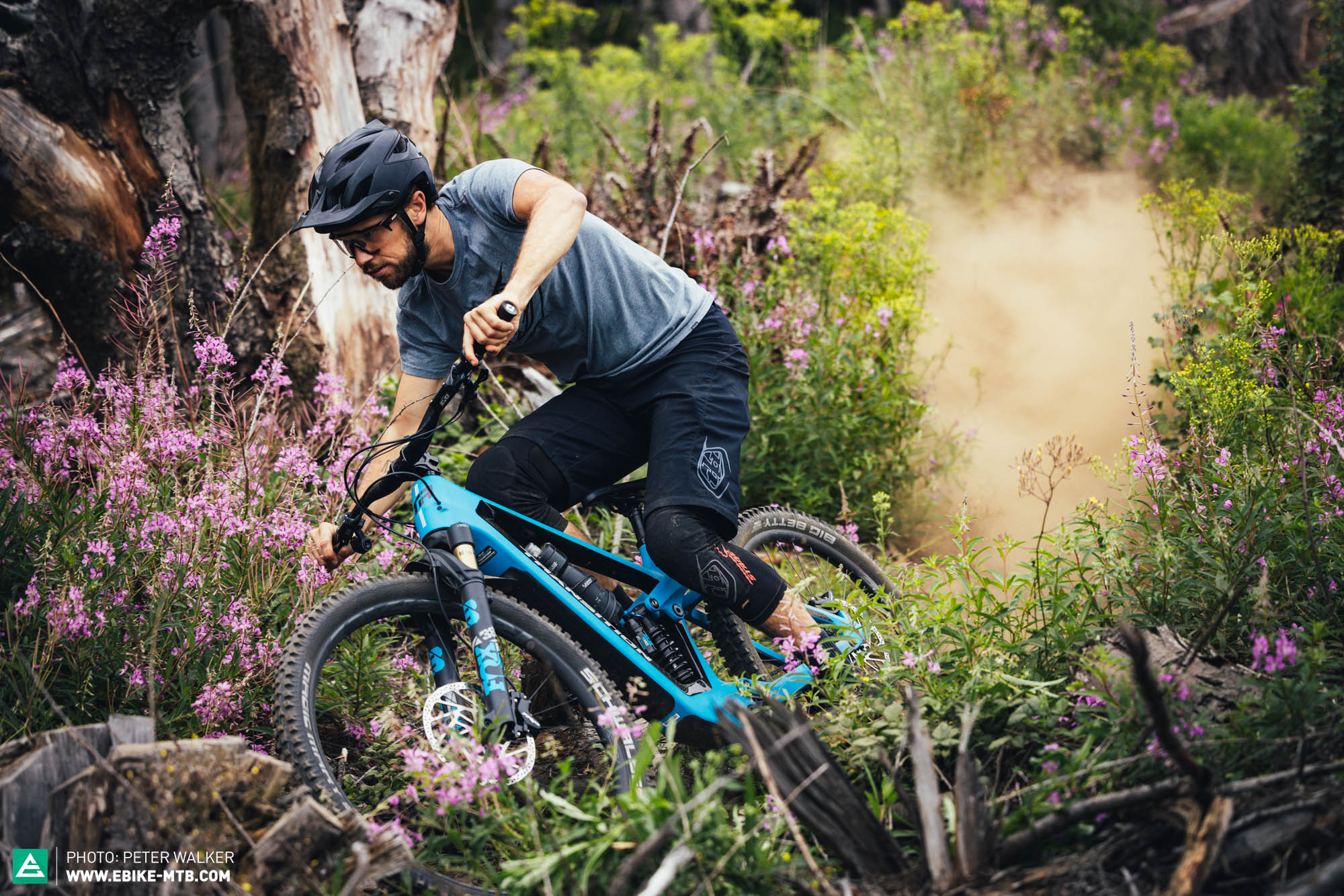
The Transition Relay Carbon PNW X0 AXS in detail
With its unmistakable frame silhouette, the Relay is distinctly recognisable as a Transition. It relies on a discreet design language, combining a harmonious ensemble of straight lines with Transition’s GiddyUp four-bar suspension platform. Considering it’s a light eMTB, the Relay looks rather beefy, with the massive down tube and oversized bottom bracket area reminding us more of a full-fat eMTB with a big motor and battery than a light eMTB. On the other hand, Transition’s engineers did a great job in masking the Ride 60’s distinctive hockey stick shape down by the motor, which is a notable feature of most FAZUA bikes. As usual, the motor integration is discreet and simple: a small LED display on the top tube shows the support levels with different colours and the battery charge status over five bars, while a small, bar-mounted ring remote allows you to control the motor system. That said, FAZUA’s hardware isn’t of the highest quality: for example, the LEDs on the top tube are difficult to read in direct sunlight, while the remote provides rather spongy feedback.
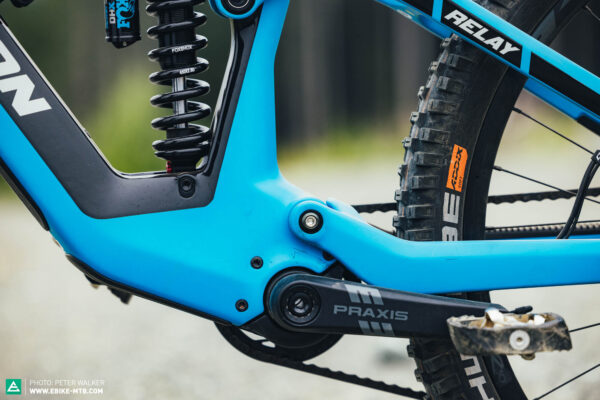
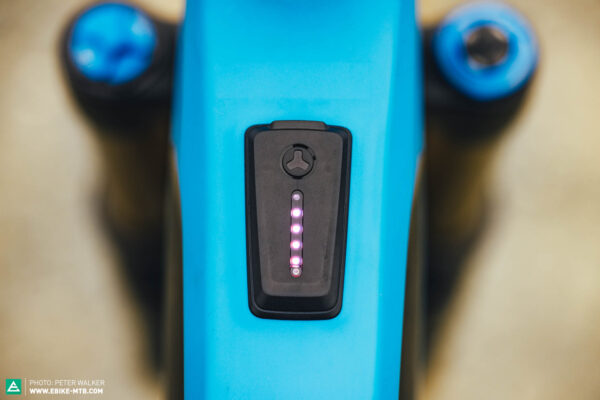
The 430 Wh battery can only be charged externally. While this might be annoying for some, the battery can be removed quickly and easily from the downtube without the need for tools. Unfortunately, the cover doesn’t sit flush with the frame, meaning that water can easily reach the inside of the bike on wet, rainy days. One of Transition’s hottest selling points for the relay is that it can be ridden both with and without the battery, which makes it suitable for lift or shuttle-assisted bike park sessions. The cables are routed internally and disappear into the frame through cable ports on the sides of the head tube rather than through the headset itself. The main frame triangle features both a tool mount and a bottle cage mount, though the smaller XS and S frames can only accommodate a small 450 ml Fidlock bottle. A generously sized chainstay protector prevents chain slap and paint chips, while an odd-looking bash guard protects the chainring from nasty impacts.
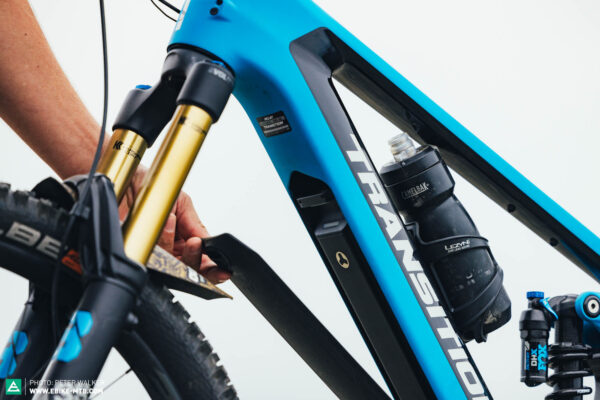
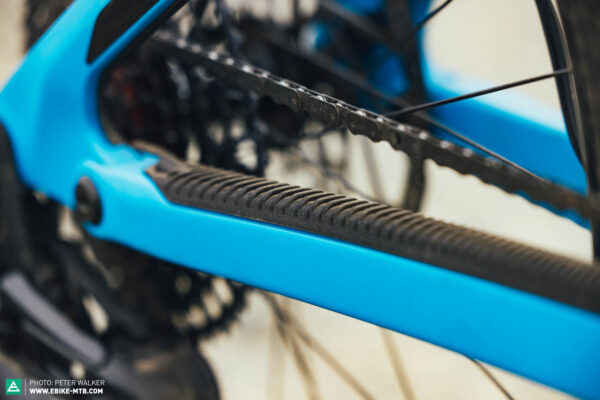
Spec variants of the Transition Relay
The Transition Relay is available in a total of six spec variants, with prices ranging from € 8,199 to € 14,699. The two entry level models feature an alloy frame and weigh around 2 kg more than their carbon counterparts, which puts them in a similar weight category as Transition’s full-fat eMTB, the Repeater. That said, at € 8,000, the alloy variant doesn’t offer great value for money, especially considering that the carbon models retail from € 10,199. Both the carbon and alloy variants are also available as a capable PNW edition with more suspension travel and a mullet wheel configuration.
The spec of our Transition Relay Carbon PNW X0 AXS test bike.
The Transition Relay Carbon PNW X0 AXS comes equipped with FOX suspension consisting of a 38 Factory fork and DHX Factory coil shock. The former relies on FOX’s top tier GRIP2 damper, which delivers a tremendous performance on the trail and offers countless adjustment options. The shock, on the other hand, is a more basic version of FOX’s DHX2 coil evergreen. This employs the same damper as the FOX FLOAT X air shock, meaning that it only has externally adjustable low-speed compression and rebound settings – as well as a climb switch for long uphills. Our Relay Carbon PNW X0 AXS test bike in size L features a OneUp dropper post with a whopping 210 mm of travel, which ensures plenty of freedom of movement on the trail in combination with the short seat tube – finally an ebike with a decently-sized dropper!
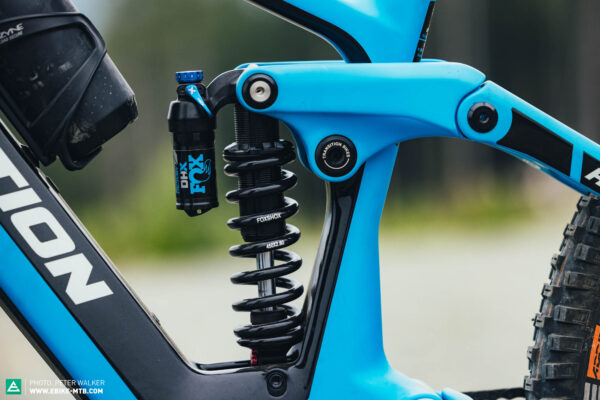
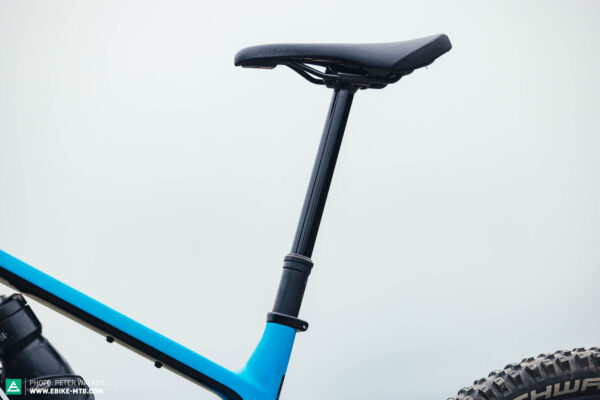
Braking is taken care of by TRP DH-R EVO four-piston brakes with a massive 220 mm rotor at the front and 200 mm disc at the rear. While TRP stoppers aren’t a very popular choice amongst mainstream bike manufacturers, they ensure powerful and predictable deceleration, especially in combination with the massive 220 mm front rotor. Although the TRP DH-R EVO model offers tool-free lever reach adjustment, the levers are positioned far from the handlebars regardless of the setting. This might be a great way to send bike thieves straight to hospital, but can be annoying if you’re used to running your levers closer to the bars. A wireless SRAM X0 Eagle Transmission drivetrain ensures precise shifting even under load, and relies on a direct-mount rear derailleur that attaches to the bike’s frame rather than on a mech hanger.
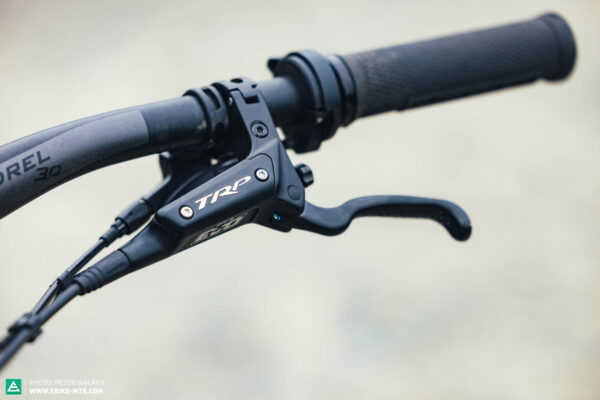
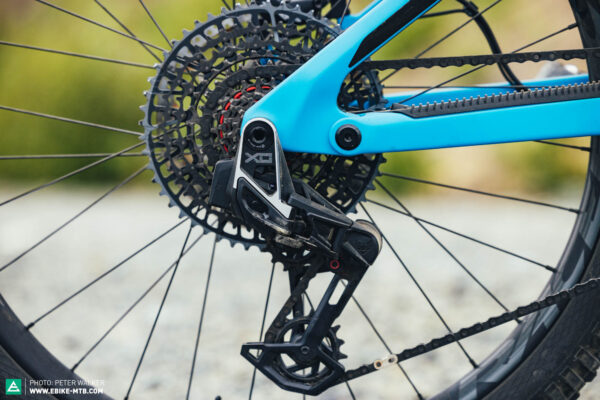
For the cockpit, Transition rely on their in-house component brand ANVL, bolting their 800 mm alloy handlebars to a matching 40 mm stem. Another clever detail is that the handlebar’s rise grows with the frame size: the smallest XS and S frame sizes come with 20 mm rise, and sizes M, L and XL with 30 mm, while the biggest XXL frame comes with a high-rise 40 mm bar. This is a clever way to adapt the ergonomics of the bike to the rider’s anatomy. However, it would make even more sense to adapt the handlebar’s width to the respective frame size! For the wheels, Transition rely on a Race Face Aeffect R alloy wheelset and Schwalbe tires, combining a Magic Mary at the front and Big Betty at the rear, both of which generate huge amounts of traction on all kinds of terrain. However, both tires come in Schwalbe’s harder Soft rubber compound and puncture-prone Super Trail casing. A potent bike like the Relay deserves more robust tires with a tougher casing, like Schwalbe’s Super Gravity. If you decide to upgrade, we recommend changing to a softer rubber compound like Schwalbe’s Ultra Soft compound for more control.
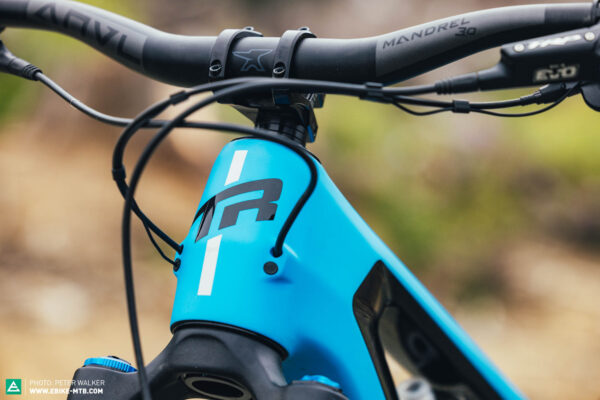

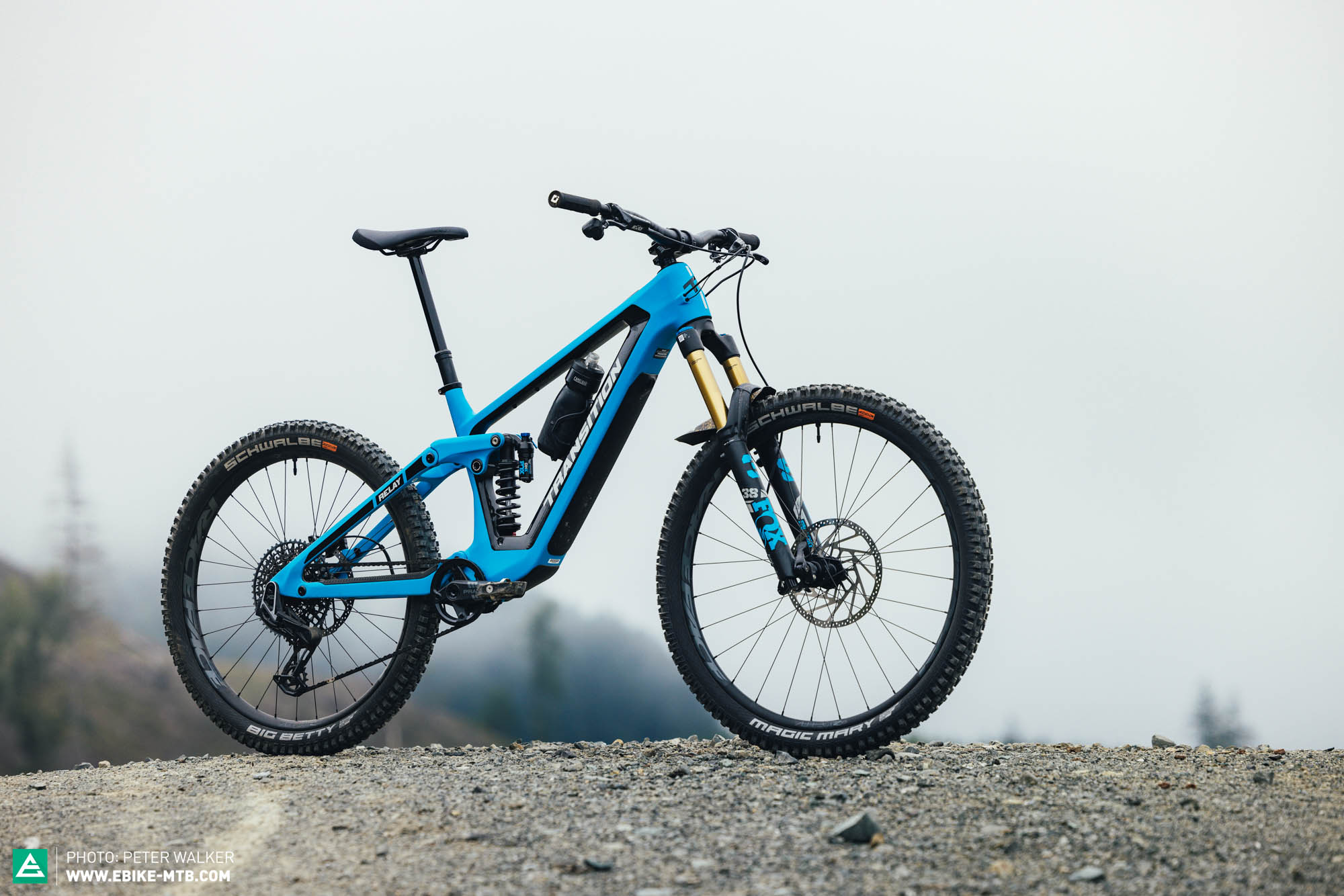
Transition Carbon PNW X0 AXS
€ 12,299
Specifications
Motor FAZUA Ride 60 60 Nm
Battery Fazua Energy 430 Wh
Display FAZUA LED Hub
Fork FOX 38 Factory GRIP2 170 mm
Rear Shock Fox DHX Coil Factory 170 mm
Seatpost OneUp Dropper Post 210 mm
Brakes TRP DH-R EVO 220/200 mm
Drivetrain SRAM X0 Eagle Transmission 1x12
Stem ANVL Swage 40 mm
Handlebar ANVL Mandrel Alloy 800 mm
Wheelset RaceFace Aeffect R Alu 29"/27.5"
Tires Schwalbe Big Betty, Super Trail, Soft/Schwalbe Magic Mary, Super Trail, Soft 2.4"/2.4"
Technical Data
Size XS S M L XL XXL
Weight 20.7 kg
Specific Features
Tool Mount
Flip Chip
Tuning tips: More robust tires with tougher casing, softer rubber compound at the front
The geometry of the Transition Relay
The Transition Relay is available in 6 sizes, XS to XXL, offering a suitable option for riders between 145 cm and 205 cm tall and thus covering a wide spectrum of statures. A flip chip in the lower shock mount allows you to adjust the geometry of the bike when converting the Relay from a full 29er to a mullet bike with a smaller 27.5″ rear wheel. The standard Relay variant could fairly easily be converted to a more capable PNW model with a suspension upgrade, a smaller rear wheel and a flip of the chip. Our test bike in size L combines 477 mm reach and a pleasantly short 430 mm seat tube, which lets you use the full dropper travel. Chainstay length is 446 mm in size L and grows with the frame size, which is meant to ensure consistent handling across all sizes.
| Size | XS | SM | MD | LG | XL | XXL |
|---|---|---|---|---|---|---|
| Top tube | 532 mm | 564 mm | 597 mm | 631 mm | 665 mm | 696 mm |
| Seat tube | 380 mm | 390 mm | 410 mm | 430 mm | 460 mm | 490 mm |
| Head tube | 100 mm | 100 mm | 115 mm | 125 mm | 135 mm | 145 mm |
| Head angle | 63.6° | 63.3° | 63.3° | 63.3° | 63.4° | 63.4° |
| Seat angle | 79.3° | 78.4° | 77.7° | 77.1° | 76.6° | 76.3° |
| Chainstay | 436 mm | 440 mm | 440 mm | 446 mm | 446 mm | 446 mm |
| BB Drop | 11 mm | 25 mm | 25 mm | 25 mm | 25 mm | 25 mm |
| Wheelbase | 1172 mm | 1211 mm | 1247 mm | 1282 mm | 1312 mm | 1341 mm |
| Reach | 405 mm | 422 mm | 452 mm | 477 mm | 502 mm | 527 mm |
| Stack | 588 mm | 615 mm | 634 mm | 643 mm | 652 mm | 661 mm |
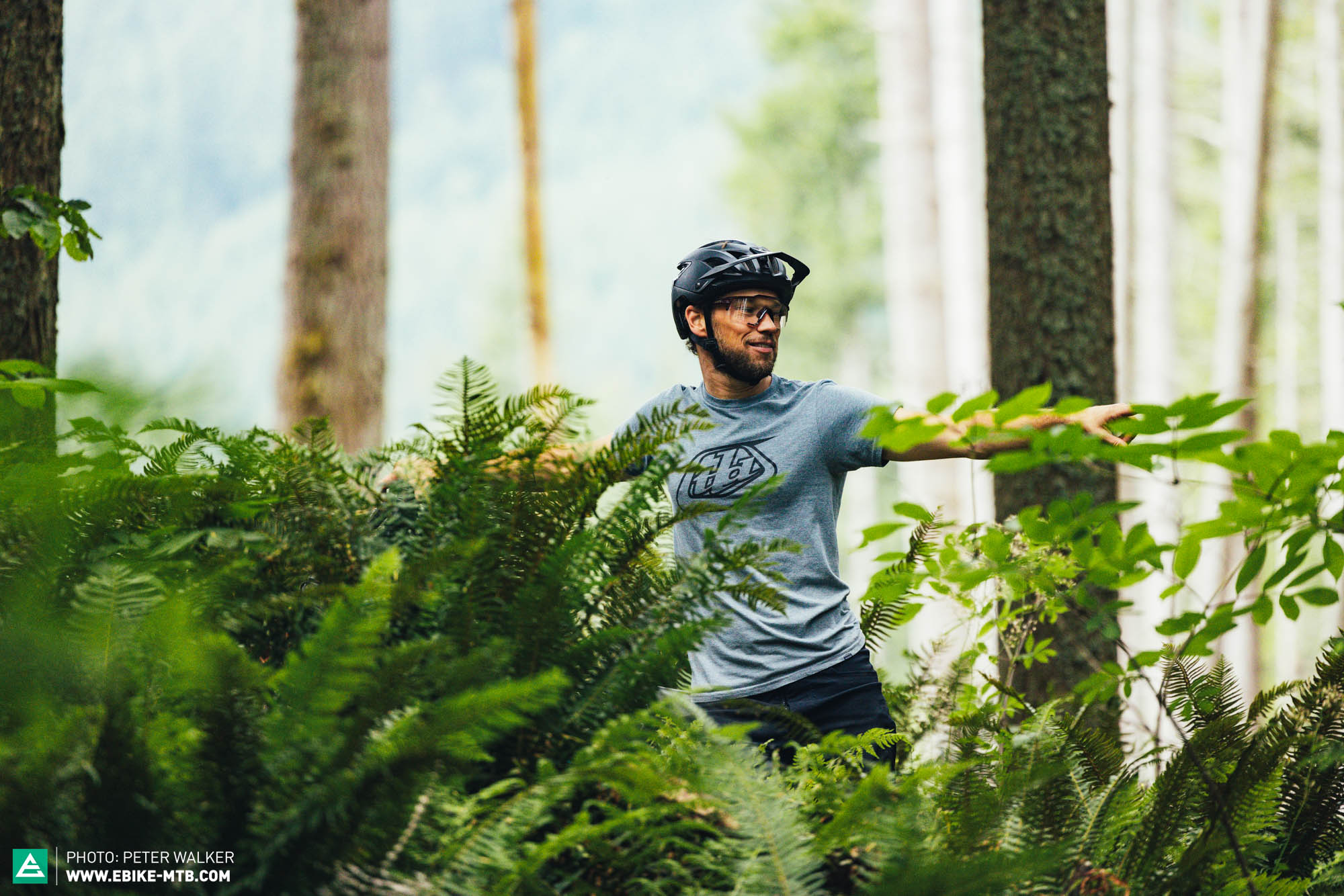
The new Transition Relay Carbon PNW X0 AXS on the trail
As soon as you swing your leg over its saddle, the Transition Relay Carbon PNW X0 AXS puts you in a comfortable yet efficient pedalling position, which might not be as upright as Transition’s full-fat ripper, the Repeater, but puts significantly less pressure on your hands, even on flat trail sections. On the other hand, this requires you to actively weight the front wheel to keep it tracking on steeper climbs. The firm suspension always sits high in its travel, preventing you from having to activate the climb switch on long, monotonous climbs. With its 60 Nm torque and 350 W max. continuous rating, the FAZUA motor packs a punch, allowing you to negotiate even steep, technical climbs without too much physical effort – but also drains the battery relatively quickly in the highest support level.
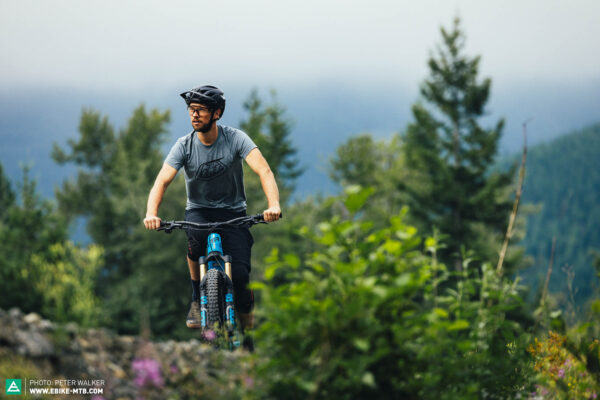

As soon as you point its nose downhill, the Relay lets you know that it means business, integrating you nicely with its frame and making its way back down into the valley with great composure. The high front-end places you in a rather upright descending position, inspiring huge amounts of confidence on nasty, steep chutes. If you prefer a more aggressive, front-heavy riding position, we recommend removing a spacer or two from under the stem. The Relay is pretty agile too, and definitely nimbler than its full-power sibling, the Repeater. That said, there are much more flickable light eMTBs out there, which is also due to the Relay’s generous suspension travel.
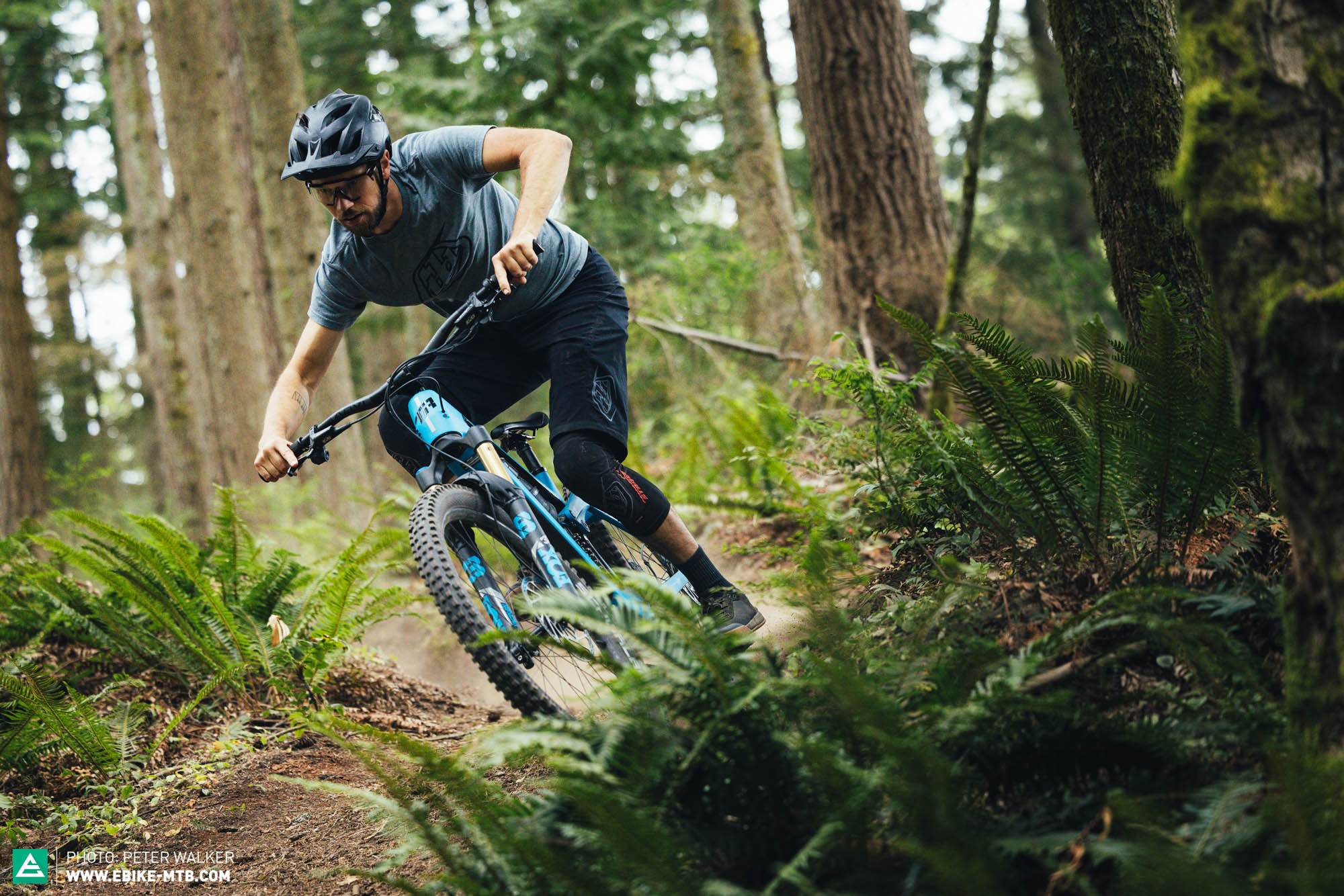
The Relay performs particularly well on technical trails, where the suspension responds sensitively and generates tons of traction. In typical Transition fashion, the Relay’s rear suspension is on the firm side, which makes it easy to generate speed by pumping through the trail, and compensates for the otherwise sluggish handling. Furthermore, the responsive rear suspension makes it easy to pop off ledges and natural kickers, turning every trail into a playground. Overall, the Relay performs particularly well on fast jump lines, proving that Transition’s engineers spend most of their spare time ripping the local trails around Bellingham, which are famous for their massive jumps and blood-curdling features. While pumping your way down the side of the mountain, the suspension provides excellent support and never sinks into its travel, and also bails you out with botched landings when you get a little too excited.


Who should take a closer look at the Transition Relay Carbon PNW X0 AXS?
The Transition Relay Carbon PNW X0 AXS is a great option if you’re looking for a capable all-rounder for all sorts of trails. You can ride it both with and without a battery, which also makes it a great companion for lift- and shuttle-assisted bike park laps. The battery is easy to remove, allowing you to embark on epic backcountry expeditions with a spare battery in the backpack. Riding uphill, the weaker motor requires more physical effort than a full-fat eMTB drive, but as soon as you turn its nose downhill, the Relay rewards your efforts with agile handling. On the trail, the Relay’s suspension provides great composure, excellent support and pop, and at the same tracks the ground sensitively. As a result, the Transition tackles everything from flowing trails to rowdy bike park laps.
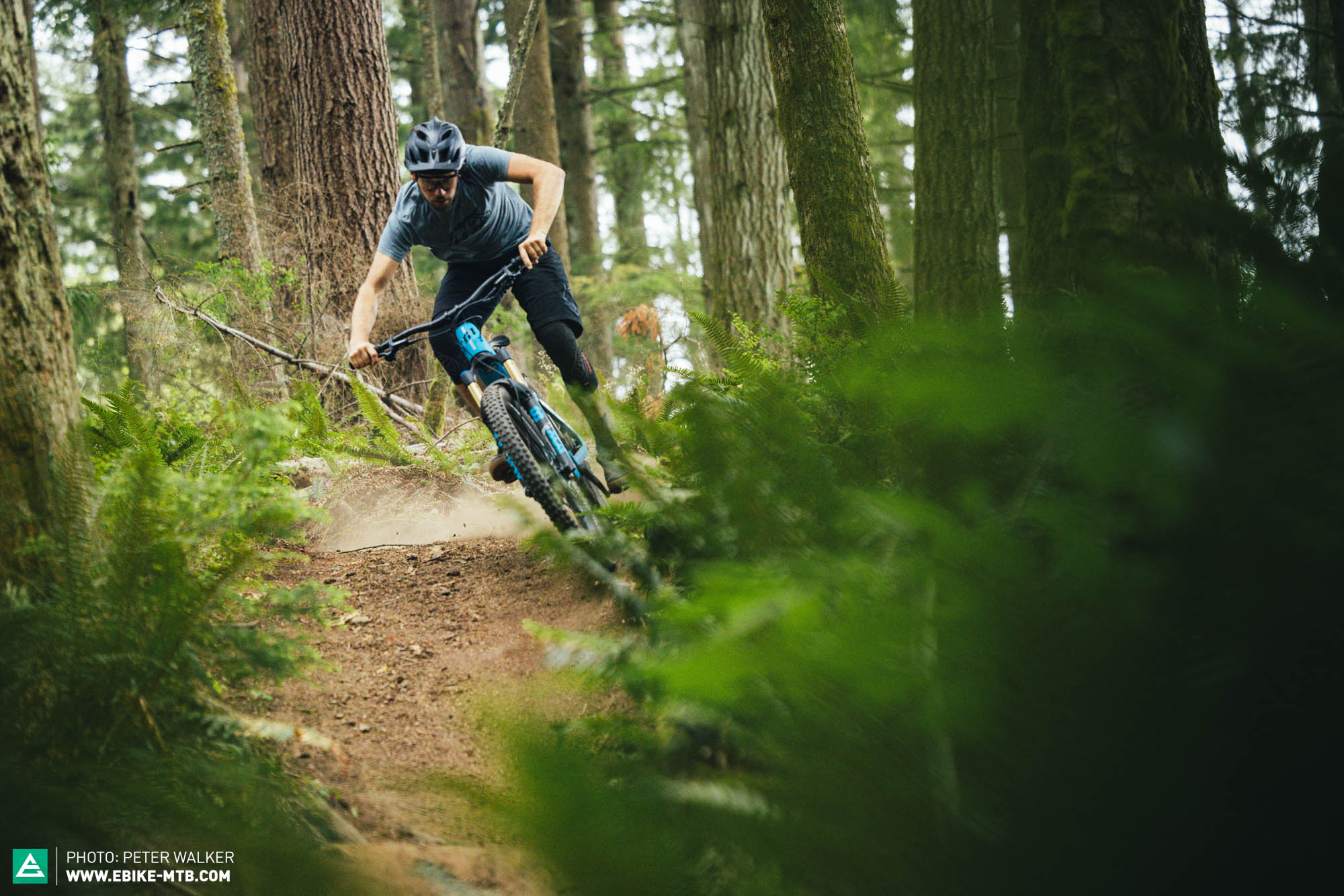
Our conclusions about the Transition Relay Carbon PNW X0 AXS
The Transition Relay Carbon PNW X0 AXS is a light eMTB with a rather beefy look. It can be ridden both with and without a battery, which sets it apart from most light eMTB currently available on the market. Furthermore, the battery is quick and easy to remove, which makes it even more fun! On top of that, the Relay is one of the few light e-mountainbikes with a decent amount of travel and composed character. The rear suspension is firm but at the same time generates tons of traction, which makes the Relay a strong, fun all-rounder for all sorts of trails.
Tuning tips: More robust tires with tougher casing, softer rubber compound at the front
Tops
- Great composure
- Excellent rear suspension performance
- Great allround potential
Flops
- Beefy look for a Light eMTB
- Akku Battery has to be removed for charging
- Slightly sluggish handling

For more details, visit Transition’s website.
Did you enjoy this article? If so, we would be stoked if you decide to support us with a monthly contribution. By becoming a supporter of E-MOUNTAINBIKE, you will help secure a sustainable future for high-quality cycling journalism. Click here to learn more.
Words: Simon Kohler Photos: Peter Walker









